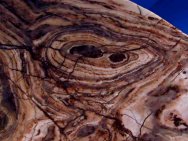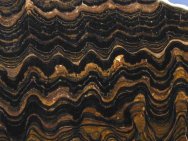


Named in 1813 from the Greek for "fire" and "form" because after being melted into a globule a sample will begin to take on a crystalline shape during cooling.
Pyromorphite is a secondary lead mineral found in the oxidized zones of lead deposits. Typically found as green, yellowish, brownish, greyish or white barrel-shaped hexagonal prisms, in clusters or as druses on matrix. The individual crystals are often modified or etched, giving a hopper-like appearance. This lead chloride phosphate forms a complete series with mimetite and vanadinite.
Pyromorphite is a member of the phosphates group and comes in at 3-1/2 to 4 on the Mohs Scale. It has a hexagonal crystal system with a resinous luster. It is transparent to translucent with a brittle tenacity and indistinct cleavage. Its fracture is irregular and uneven. Its chemical composition is Pb5(PO4)3CI. Its specific gravity is 6.5 to 7.1
Pyromorphite can commonly form pseudomorphs after Galena and Cerussite. There are no commercial uses for this mineral other than providing dazzling display specimens for collectors worldwide.


















































